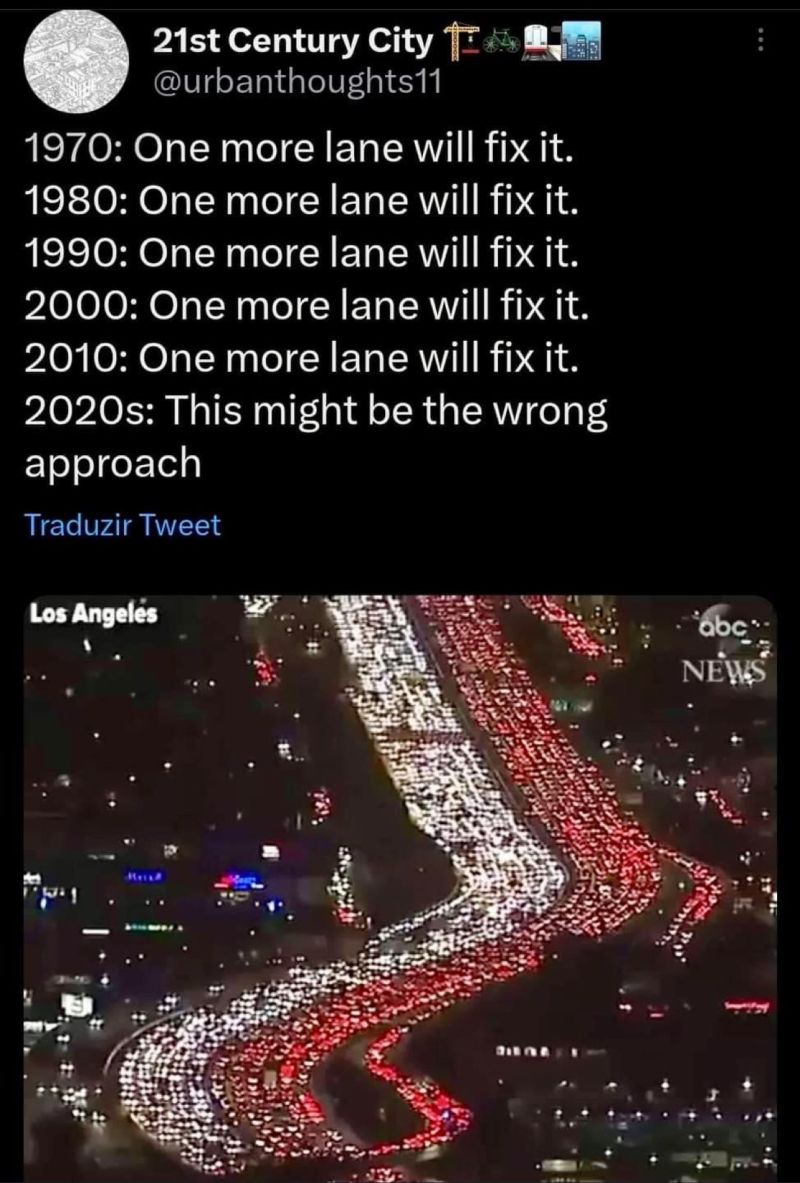this post was submitted on 09 May 2024
0 points (NaN% liked)
Memes
47256 readers
1578 users here now
Rules:
- Be civil and nice.
- Try not to excessively repost, as a rule of thumb, wait at least 2 months to do it if you have to.
founded 5 years ago
MODERATORS
you are viewing a single comment's thread
view the rest of the comments
view the rest of the comments

Just going to leave this one here:
Passenger per hour going where? If everyone is going from A to B, ok. But people need to go allover the place.
For me a 10min car ride is a 1.15h bus ride....
Well, no one is saying cars are worse for all purposes. If you want to take your family and dogs to a cabin in the mountains while also shopping for food along the way, it is probably going to be your best bet. Still, that is not what is pictured in the post. These are commuters that are probably moving from work to home (or vice versa), where cars really are the worst of most options. If the bus takes longer, it is probably an issue of allocation of funds for a shorter route and exclusive lanes for it.
I don't really like including pedestrians in there. Like sure, you can fit a bunch of people in a small area, but another point you shouldn't ignore is the throughput over time, and pedestrians are by their nature rather slow. Obviously if you're looking at shopping in a street lined by shops left and right, then that street becomes tailor-made for pedestrian traffic (and nothing else except perhaps bicycles). But public transport is much better suited for travelling any further distances, and that should be the main focus when deciding to ditch cars.
Sure! Both speed and distance matters a lot for throughput. The advantage of pedestrian traffic is that designing for it reduces the distance people have to travel and that it combines very well in conjunction with public transport, unlike cars. Also, the speed of mixed traffic is inverse correlated to the number of vehicles, hence is a special case in this regard where throughput may decrease as the volume per lane increases. The overall point however is that a single train can substitute a staggering amount of private vehicles (and who doesn't love leaning back, listening to music and reading the news while commuting?).